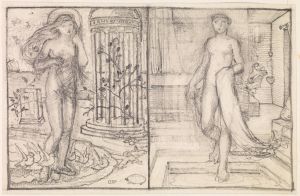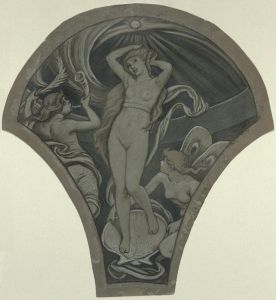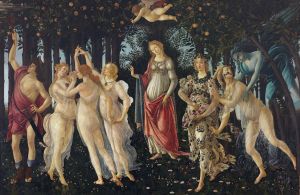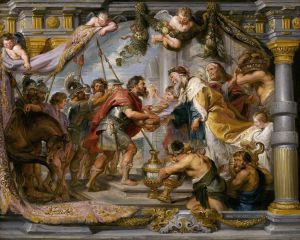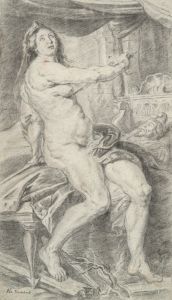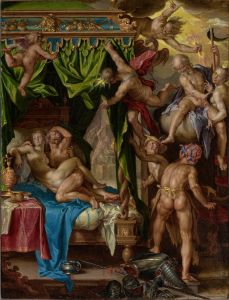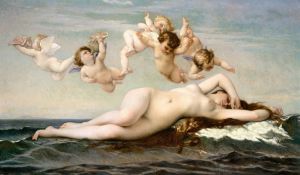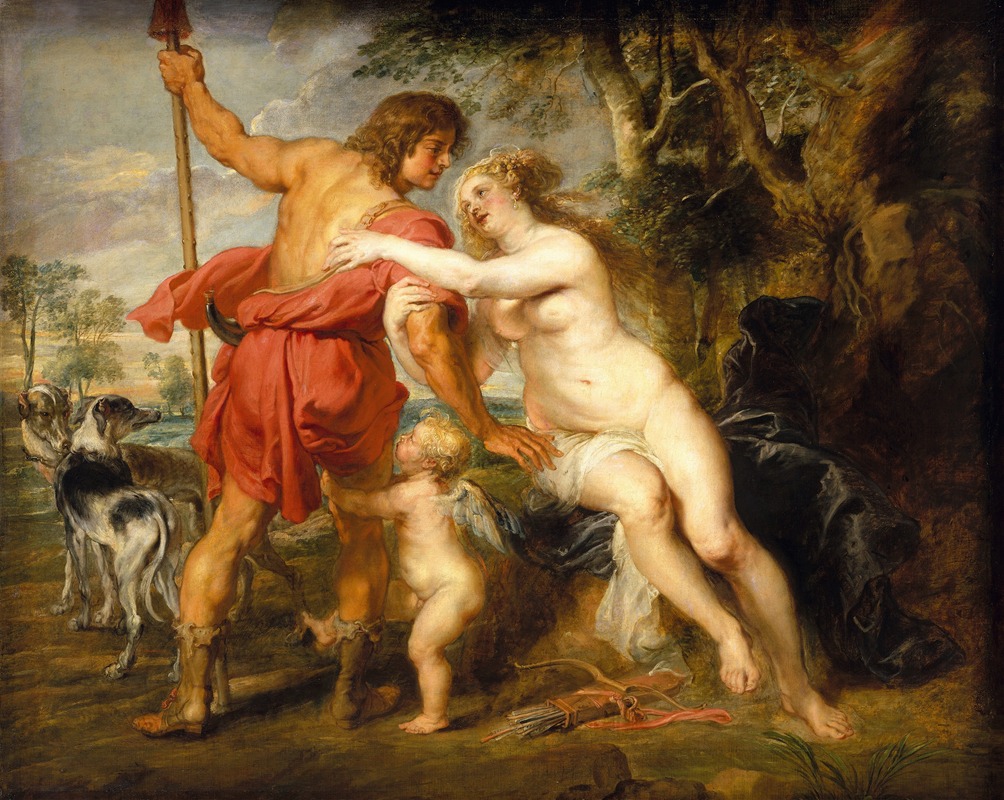
Venus and Adonis
A hand-painted replica of Peter Paul Rubens’s masterpiece Venus and Adonis, meticulously crafted by professional artists to capture the true essence of the original. Each piece is created with museum-quality canvas and rare mineral pigments, carefully painted by experienced artists with delicate brushstrokes and rich, layered colors to perfectly recreate the texture of the original artwork. Unlike machine-printed reproductions, this hand-painted version brings the painting to life, infused with the artist’s emotions and skill in every stroke. Whether for personal collection or home decoration, it instantly elevates the artistic atmosphere of any space.
"Venus and Adonis" is a renowned painting by the Flemish Baroque master Peter Paul Rubens, created around 1635. This artwork is a vivid representation of a popular mythological theme, depicting the tragic love story between Venus, the goddess of love, and Adonis, a handsome mortal youth. Rubens, known for his dynamic compositions and vibrant use of color, captures the emotional intensity and drama of the narrative in this painting.
The painting illustrates the moment when Venus, aware of the impending danger that Adonis faces, attempts to dissuade him from going on a hunt. Adonis, however, is determined to leave, and the scene is charged with tension and emotion. Rubens masterfully conveys this through the expressive gestures and facial expressions of the figures. Venus is shown clinging to Adonis, her body language pleading and desperate, while Adonis appears resolute yet tender, gently pulling away from her grasp. The composition is further enriched by the inclusion of Cupid, the god of love, who is depicted trying to assist Venus in her efforts to keep Adonis from leaving.
Rubens' use of color and light in "Venus and Adonis" is particularly noteworthy. The warm, rich tones of Venus's skin and the soft, flowing drapery contrast with the cooler, more subdued colors of the landscape, creating a harmonious balance that enhances the emotional impact of the scene. The play of light and shadow adds depth and dimension, drawing the viewer's eye to the central figures and emphasizing their emotional connection.
The painting is also a testament to Rubens' skill in rendering the human form. His figures are robust and full of vitality, characterized by their dynamic poses and the naturalistic depiction of anatomy. This attention to detail and the lifelike quality of his figures are hallmarks of Rubens' style and contribute to the painting's enduring appeal.
"Venus and Adonis" reflects Rubens' deep engagement with classical mythology and his ability to translate these ancient stories into compelling visual narratives. The painting is part of a larger tradition of artworks inspired by the tale of Venus and Adonis, a story that has been a popular subject in art and literature since antiquity. Rubens' interpretation is distinguished by its emotional depth and the artist's characteristic exuberance.
The painting is housed in the collection of the Museo del Prado in Madrid, Spain, where it continues to be admired by visitors from around the world. It is one of several works by Rubens in the museum's collection, showcasing the artist's versatility and his significant contribution to the Baroque movement.
Rubens' "Venus and Adonis" remains a significant work in the study of Baroque art, illustrating the artist's mastery of composition, color, and narrative. It exemplifies the dramatic and emotive qualities that define Rubens' oeuvre and highlights his ability to bring mythological subjects to life with unparalleled vitality and passion.





